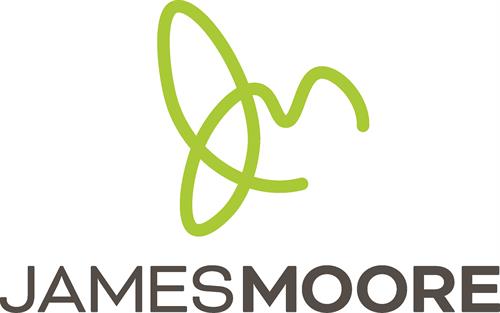Contributed by: James Moore.
The concepts of “culture fit” and “culture add” in the modern workplace play big roles in shaping the dynamics of an organization. While both terms assess a person’s compatibility with a company, their underlying philosophies and impacts on success starkly differ.
What’s the difference between culture fit and culture add?
Traditionally, culture-fit has been the prevailing guide in the hiring processes. It involves finding candidates whose values, behaviours and work styles align closely with those of the existing team.
Culture-add, on the other hand, aims for diversity and a broader perspective in the workplace. It prioritizes the idea that individuals bring unique experiences, skills and viewpoints that complement and enhance your existing culture.
These two approaches have big differences in how they impact organizational development and growth. On the surface, culture fit contributes to a cohesive environment, ensuring mutual understanding and smooth collaboration. But it also tends to reinforce existing norms and practices. An exclusive emphasis on culture fit can lead to an unnatural uniformity within a company — and that can stifle diversity and innovation.
Culture-add encourages continuous evolution by embracing new ideas and diverse viewpoints. This often results in richer problem-solving approaches and a more creative work environment. In a culture-add environment, differences aren’t just tolerated but celebrated. The result is often a more innovative, adaptive and resilient organization.
What’s the benefit of a culture-add approach?
Research has shown that diverse teams outperform homogenous groups thanks to their varied perspectives, leading to better outcomes. Culture-add aligns closely with the contemporary understanding that diverse teams are more effective in problem-solving and decision-making.
Companies that prioritize (and publicize) culture-add are also better positioned to attract and retain top talent from various backgrounds. This fosters an inclusive environment that encourages creativity and learning. By valuing what everyone can add to the collective culture, organizations can create a more dynamic and competitive workspace.
How can I introduce culture-add in my company?
Implementing a culture-add approach often requires a change in recruitment and management strategies. Emphasize identifying the unique skills, experiences and perspectives that candidates can contribute. And create an inclusive environment where all voices are heard and respected. This is vital in encouraging employees to express their viewpoints without fear of exclusion.
Shifting to a culture-add mindset is part of a crucial evolution in modern workplaces. However, this transition is not without its challenges. Resistance from people comfortable with the status quo can create obstacles. However, the benefits of a more innovative and resilient workforce outweigh these challenges. Here are some steps your company can take to address these challenges:
| Define and Communicate Core Values | Clearly define the core values that are essential to your company’s success. Communicate these values to employees and potential hires, and emphasize the importance of diversity and inclusion. |
| Promote Diversity and Inclusion | Actively seek diversity in hiring. Ensure that recruitment practices are designed to attract a varied pool of candidates. |
| Revise Hiring Criteria | Instead of hiring based solely on cultural fit, assess how candidates can contribute to and bring new perspectives to your existing culture. Consider their potential to complement and enhance the team (rather than fit into existing norms). |
| Training and Education | Provide training to employees on diversity, inclusion and unconscious bias. Foster a culture of continuous learning to encourage employees to broaden their perspectives. |
| Leadership Commitment | Provide employees with training on diversity, inclusion, and unconscious bias. Foster a culture of continuous learning to encourage employees to broaden their perspectives. |
| Employee Resource Groups | Establish employee resource groups that celebrate different cultures. Provide a platform for employees to share their unique perspectives. |
| Feedback Mechanisms | Implement procedures for employees to provide feedback. Then act on that input to continually improve and adapt your culture. |
| Performance Metrics | Introduce metrics that measure the success of diversity and inclusion efforts. Tie these metrics to performance evaluations and promotions to emphasize their importance. |
| Flexible Work Arrangements | The culture add approach emphasizes inclusivity, so offer flexible work arrangements to accommodate diverse needs and lifestyles. Show that the company values the contributions of each employee. |
| Celebrate Differences | The culture-add approach emphasizes inclusivity, so offer flexible work arrangements to accommodate diverse needs and lifestyles and show that the company values each employee’s contributions. |
| Mentorship and Sponsorship Programs | Establish mentorship and sponsorship programs that connect employees with diverse backgrounds to experienced leaders. Foster relationships that help these employees advance their careers. |
| Recruitment Outreach | Expand recruitment efforts to reach a broader talent pool. As mentioned earlier, culture-add initiatives are appealing to job seekers. When searching for job candidates, engage with communities and organizations that represent diverse backgrounds. |
| Reassess Company Policies | Review and update company policies to ensure they are inclusive and considerate of differing needs. |
Conclusion
Transitioning to a culture-add approach requires commitment and continuous effort. It’s about creating an environment where diverse perspectives are not just welcomed but seen as essential for your company’s success.
With such an important undertaking, it’s a wise choice to get help from an experienced HR consulting firm. They’ll guide you through every step of the process — from initially defining your goals to the implementation of your new policies — for your best chance at a successful culture-add transition.
Related AGN reading:
AGN Global Business Voice: Managing Generational Friction
AGN Global Business Voice: The Great Female Resignation…? The AGN ‘Women of Impact’ Initiative
AGN Global Business Voice: Unlocking Your Firm’s Power to Recruit Quality Staff
AGN Global Business Voice: Diversity & Inclusion (D&I) – Good Business, Or a Matter Of Survival?
Disclaimer: All content provided in this article is for informational purposes only. Matters discussed in this article are subject to change. For up-to-date information on this subject please contact a James Moore professional. James Moore will not be held responsible for any claim, loss, damage or inconvenience caused as a result of any information within these pages or any information accessed through this site.
Cover image by jcomp on Freepik
Contributed by:
James Moore & Co
5931 NW 1st Place
Gainesville, FL 32607
352-577-8990
https://www.jmco.com
Enquiry form
Phone: 888-635-2654





